Kalanchoe Beharensis (Velvet elephant ear) Profile
Written by Iris
Nov 17 2021
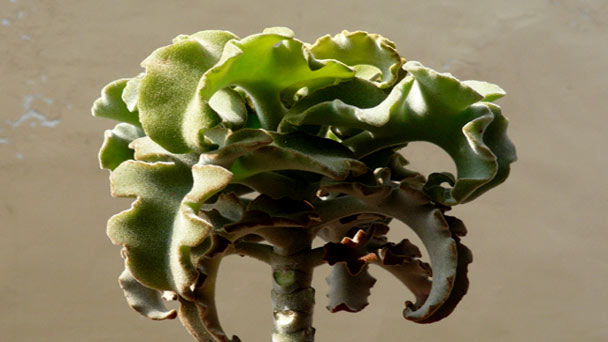
Kalanchoe Beharensis (Velvet Elephant ear) is a slow growing succulent treelike shrub, usually growing to about 1.5m tall and evenly distributed. It has thick stems with large, undulating, folded, olive-green leaves. Kalanchoe Beharensis Leaves are covered with soft brown hair that gives the leaves a soft, velvety texture. Once ripe, the Kalanchoe Beharensis produces small yellow flowers in the winter.
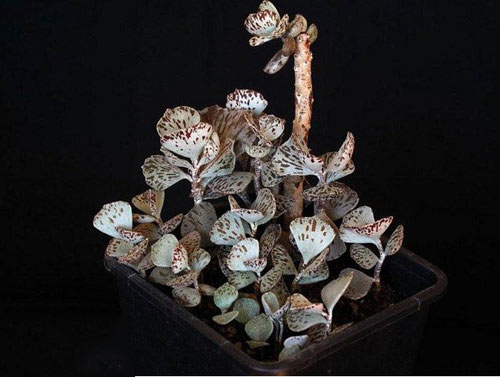
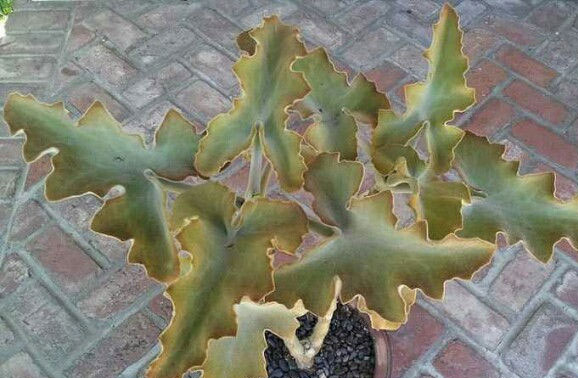
To multiply it by seeds you have to fill a seedling tray - the ones that are often used to sow garden plants - with universal cultivation substrate mixed with 50% perlite, and water thoroughly. Then, place a maximum of two seeds in each socket, cover them with a thin layer of substrate, and finally, put the seedbed outside, in a bright area but without direct sun. Thus, keeping the soil moist, they will germinate in about two or three weeks.
Steps for Kalanchoe Beharensis Propagation with Stem Cuttings
It is the fastest option. You just have to cut a stem, let the wound dry in semi-shade for about five days, and then plant it in a pot with universal substrate mixed with perlite in equal parts or in the garden. This way it will emit its own roots after about two weeks.
Steps for Kalanchoe Beharensis Propagation with Leaves
When propagating it with leaves, you should get a leave carefully from the mother plant. It should be a healthy leave that has no part left on the stem. In this way, the propagation will workalanchoe beharensis Before replanting, wait for a few days to allow it to callous. Use well-draining soil for your new kalanchoe beharensis plant. Don’t forget to water when the soil dries out.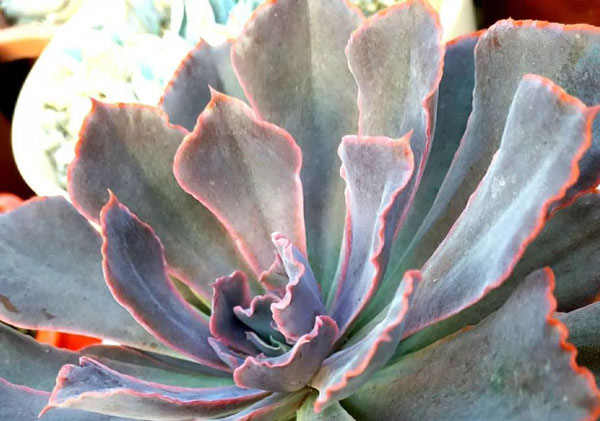
Remove old flowers to keep plant looking healthy and prevent seed production that drains the plant's energy at the expense of forming new flowers.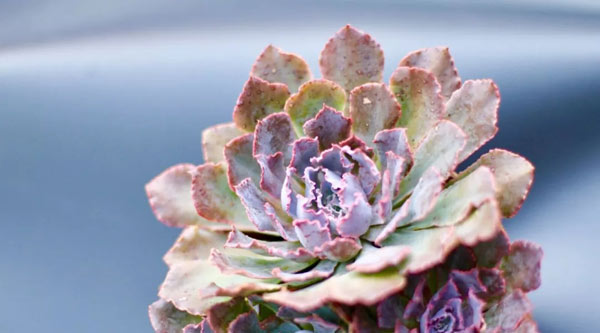
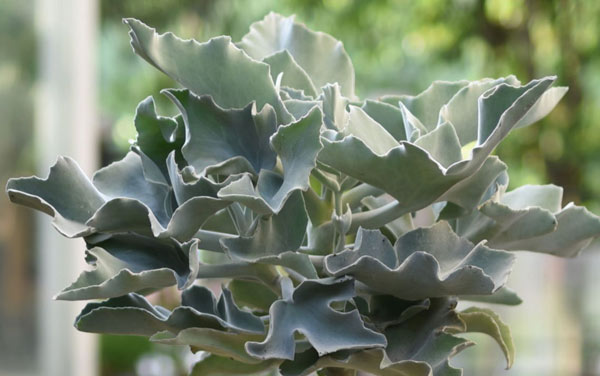
kalanchoe beharensis blossfeldiana: The most popular type of kalanchoe, blossfeldiana features large flower heads and is available in a variety of colors. They naturally bloom in the spring, though they can be forced into flowering throughout the year.
kalanchoe beharensis manginii: This plant varietal features fleshy leaves and bears large, bell-like pendant flowers. Moist air is an essential component of its prolonged flowering.
kalanchoe beharensis porphyrocalyx: Also known as Pearl Bells, this varietal consists of slender, rectangular leaves and purple pendant flowers.
kalanchoe beharensis beharensis: This kalanchoe type is prized for its large, velvety leaves, which come in pale silvery green.
kalanchoe beharensis pinnata: This kalanchoe variety is characterized by fleshy green leaves and bears tiny plantlets along its margins.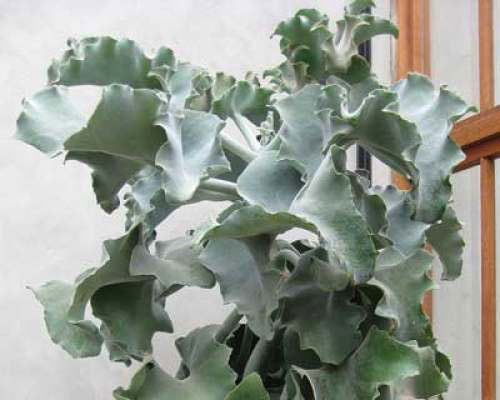
Kalanchoe Beharensis PictureKalanchoe Beharensis InfoKalanchoe Beharensis Native HabitsKalanchoe Beharensis DistributionHow to Grow & Care for Kalanchoe BeharensisHow to Grow Kalanchoe BeharensisHow to Care for Kalanchoe BeharensisUses of Kalanchoe BeharensisVarieties of Kalanchoe BeharensisKalanchoe Beharensis Common Pests/DiseasesKalanchoe Beharensis Companion PlantsStonecropYarrowOrnamental Grass
Kalanchoe Beharensis Picture

Kalanchoe Beharensis Info
| Common Name | Kalanchoe felt bush, Kalanchoe maltese cross, Elephant Ear Kalanchoe, Velvet Elephant Ear |
| Maximum Reachable Height | Up to 12 feet |
| Flower Colour | Greenish yellow |
| Bloom Time | Winter |
| Difficulty Level | Easy to grow |
| Maximum Reachable Height | Up to 12 feet |
Kalanchoe Beharensis Native Habits
Kalanchoe Beharensis is winter hardy to USDA Zones 11-12 where plants are easily grown in well-drained, sandy loams in full sun. Kalanchoe Beharensis usually appreciate some part afternoon shade. kalanchoe beharensis thrive in heat and humidity, but are intolerant of frost. Kalanchoe Beharensis have excellent drought tolerance. Allow soils to dry out before re-watering. Avoid overwatering. In St. Louis, Kalanchoe Beharensis may be grown in a container that is overwintered indoors in a sunny window.Kalanchoe Beharensis Distribution
Kalanchoe beharensis is native to South Madagascar.
How to Grow & Care for Kalanchoe Beharensis
How to Grow Kalanchoe Beharensis
Steps for kalanchoe beharensis propagation with SeedsTo multiply it by seeds you have to fill a seedling tray - the ones that are often used to sow garden plants - with universal cultivation substrate mixed with 50% perlite, and water thoroughly. Then, place a maximum of two seeds in each socket, cover them with a thin layer of substrate, and finally, put the seedbed outside, in a bright area but without direct sun. Thus, keeping the soil moist, they will germinate in about two or three weeks.
Steps for Kalanchoe Beharensis Propagation with Stem Cuttings
It is the fastest option. You just have to cut a stem, let the wound dry in semi-shade for about five days, and then plant it in a pot with universal substrate mixed with perlite in equal parts or in the garden. This way it will emit its own roots after about two weeks.
Steps for Kalanchoe Beharensis Propagation with Leaves
When propagating it with leaves, you should get a leave carefully from the mother plant. It should be a healthy leave that has no part left on the stem. In this way, the propagation will workalanchoe beharensis Before replanting, wait for a few days to allow it to callous. Use well-draining soil for your new kalanchoe beharensis plant. Don’t forget to water when the soil dries out.

How to Care for Kalanchoe Beharensis
- Light
- Soil
- Water
- Temperature and Humidity
- Fertilizer
- Pruning
Remove old flowers to keep plant looking healthy and prevent seed production that drains the plant's energy at the expense of forming new flowers.

Uses of Kalanchoe Beharensis
Kalanchoe beharensis, or Felt Bush, is one of favorite species and one of the more dramatic landscape Kalanchoes in cultivation. kalanchoe beharensis can actually become a large shrub or even a tree in the right climate, growing up over ten feet tall. It is one of the fuzzy-leaved species, but the leaves on this one can get to large- up to a foot long or more, and nearly as wide. Stems become gnarled, twisted and covered with bizarre, ornamental leaf scars. And old, tall plant is truly a piece of living sculpture. Flowers are unimpressive. kalanchoe beharensis is one of the most heat tolerant of all the Kalanchoes tolerating the hottest, drying sun my climate can throw at it. It comes in several cultivars, some with bronze or copper fuzz, and some miniature varities. Cold tolerance is not great, but at least down into the high 20Fs.
Varieties of Kalanchoe Beharensis
While there are tons of different kalanchoe varietals out there, only a few are well-suited to life as a houseplant. The most popular (and widely-available) options include:kalanchoe beharensis blossfeldiana: The most popular type of kalanchoe, blossfeldiana features large flower heads and is available in a variety of colors. They naturally bloom in the spring, though they can be forced into flowering throughout the year.
kalanchoe beharensis manginii: This plant varietal features fleshy leaves and bears large, bell-like pendant flowers. Moist air is an essential component of its prolonged flowering.
kalanchoe beharensis porphyrocalyx: Also known as Pearl Bells, this varietal consists of slender, rectangular leaves and purple pendant flowers.
kalanchoe beharensis beharensis: This kalanchoe type is prized for its large, velvety leaves, which come in pale silvery green.
kalanchoe beharensis pinnata: This kalanchoe variety is characterized by fleshy green leaves and bears tiny plantlets along its margins.

Kalanchoe Beharensis Common Pests/Diseases
Kalanchoe beharensis is tolerant to insect pests or diseases. Normally, no serious insect pest infestations or diseases appear on this plant. They may show some susceptibility to mealybugs, scales, aphids, and mites. These insects like to feed on the leaves of kalanchoe beharensis. They can be a problem if they go unnoticed. It is better to check your plants regularly to control the problem as soon as it appears.Kalanchoe Beharensis Companion Plants
Stonecrop
The stonecrop is a succulent sedum plant (Sedum spp.), ideal for arid areas of the garden. Growing stonecrops is one of the easier plant projects because of their easy maintenance and low culture requirements.Yarrow
Yarrow (Achillea millefolium) is a native North American plant that's popular with pollinators and practically care-free, making it perfect for borders, ground covers, and open meadows. Here's how to grow yarrow in your garden.Ornamental Grass
The most popular ornamental grass, feather reed grass offers a distinct upright habit that looks fantastic all winter long. Like many grasses, this tough plant tolerates a wide range of conditions.Latest Updated
- Benefits of Bugleweed - 7 Science-backed Health Benefits
- Bugleweed Dangers & Side Effects - Is It Poisonous?
- How to Plant Evergreen Trees - What You Should Know
- When to Plant Evergreens - Grow Guide for Evergreen Trees
- 12 Wonderful Evergreen Shrubs for Your Garden
- 12 Popular Evergreen Plants with Pictures for Beginners
- When And How To Prune A Lilac Bush Like a Pro
- How to Grow & Care for Lilac Vine (Hardenbergia Violacea)
- Japanese Lilac Tree (Syringa Reticulata) Care & Propagation Guide
- Shumard Oak Pros and Cons - What to Know
Popular Articles
- Winter maintenance of Antirrhinum Majus
- How to Grow Terminalia Mantaly Tree
- How to Grow and Care for Crossostephium Chinense
- How to grow Antirrhinum Majus in spring
- Peristeria Elata (Dove Orchid) Profile: Info & Care Guide
- Underwatered Snake Plant (Sansevieria Trifasciata) - Signs And How To Fix
- How to Care for Brazilian Jasmine Plant (Mandevilla Sanderi)
- How to Grow & Care for Graptopetalum Purple Delight in Summer
- Rosa Chinensis (China Rose): Plant Growing & Care Tips
- How to Care for Baby Sun Rose (Aptenia Cordifolia)